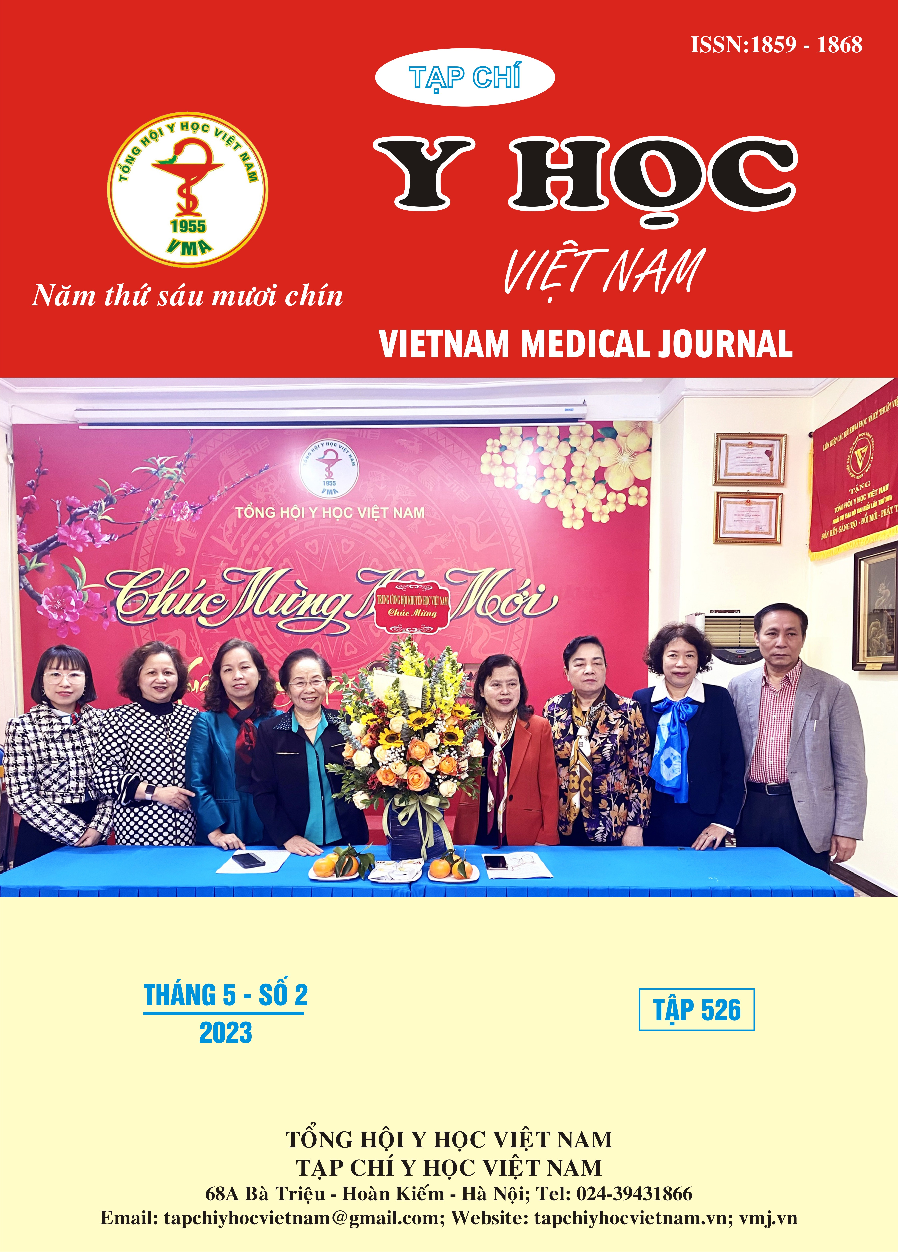HOSPITAL INFECTION AT THE CENTER FOR POSITIVE RECARE OF COVID-19 PATIENTS BY BACH MAI HOSPITAL – HO CHI MINH CITY IN 2021
Main Article Content
Abstract
Objectives: The study aimed to determine the rate of hospital-acquired infections, pathogens, risk factors and treatment outcomes related to hospital-acquired infections at the Intensive Care Unit for COVID-19 patients under Bach Mai Hospital - Ho Chi Minh City. Ho Chi Minh in 2021. Method: This was a retrospective analysis of prospectively collected data of all consecutive patients with COVID-19 hospitalized for treatment at the Intensive Care Center for COVID-19 patients under Bach Mai Hospital - Ho Chi Minh City from August 11 to October 30, 2021. Results: Among 1,137 sampled patients, 318 demonstrated 411 HAIs (28%). Pneumonia (n= 294 [71,5%]) and bloodstream infections (n = 74 [18,0%]) were the most common HAIs. Multidrug-resistant (MDR) bacteria such as Acinetobacter baumannii (31,9%) and Klebsiella pneumonia (25,7%) and were the most common isolated organisms. Diabetes (OR=1.7; CI95%: 1.2 – 2.4; p < 0.05); Cardiovascular disease (OR=1.8; CI95%: 1.3 – 2.6; p < 0.05); Interventional procedures: CPAP (OR=3.3; CI95%: 2.4 – 4.7; p < 0.001); Intrusive ventilator (OR=2.6; CI95%: 1.3 – 5.1; p < 0.001); Central venous catheter (OR=2.5; CI95%: 1.7 – 3.6; p < 0.05); Indwelling urinary catheter (OR=4.01; CI95%: 1.7 – 9.5; p < 0.05) were independently associated with HAIs. Conclusions: The rate of patients with NKBV is 28%. Pneumonia and bloodstream infections are the two most common types of hospital-acquired infections in patients with COVID-19. Most of the pathogens that cause UTIs isolated were Gram-negative bacteria Acinetobacter baumannii and multi-antibiotic resistant Klebsiella pneumonia. The study results also showed that the factors related to BV include invasive mechanical ventilation, CPAP breathing, catheterization. central vein, bladder catheterization, diabetes mellitus, cardiovascular disease on admission.
Article Details
Keywords
nhiễm khuẩn bệnh viện, COVID-19, hồi sức tích cực.
References
2. Sharifipour E, Shams S, Esmkhani M, et al. Evaluation of bacterial co-infections of the respiratory tract in COVID-19 patients admitted to ICU. BMC Infect Dis. 2020;20(1):646. doi:10.1186/s12879-020-05374-z
3. Thành CT, Thư TA, Thăng CV, et al. Thực trạng Nhiễm khuẩn Bệnh viện ở người bệnh COVID-19 tại Bệnh viện dã chiến - Trung tâm y tế huyện Hòa Vang năm 2020. YHCĐ. 2022;63(1). doi:10.52163/yhc.v63i1.265
4. He Y, Li W, Wang Z, Chen H, Tian L, Liu D. Nosocomial infection among patients with COVID-19: A retrospective data analysis of 918 cases from a single center in Wuhan, China. Infect Control Hosp Epidemiol.:1-2. doi:10.1017/ice.2020.126
5. Garcia-Vidal C, Sanjuan G, Moreno-García E, et al. Incidence of co-infections and superinfections in hospitalized patients with COVID-19: a retrospective cohort study. Clin Microbiol Infect. 2021;27(1):83-88. doi:10.1016/ j.cmi.2020.07.041
6. Bardi T, Pintado V, Gomez-Rojo M, et al. Nosocomial infections associated to COVID-19 in the intensive care unit: clinical characteristics and outcome. Eur J Clin Microbiol Infect Dis. 2021; 40(3):495-502. doi:10.1007/s10096-020-04142-w
7. Grasselli G, Scaravilli V, Mangioni D, et al. Hospital-Acquired Infections in Critically Ill Patients With COVID-19. Chest. 2021;160(2):454-465. doi:10.1016/j.chest.2021.04.002
8. Bộ Y tế. Quyết định 3916/QĐ-BYT Hướng dẫn giám sát nhiễm khuẩn bệnh viện trong cơ sở khám bệnh, chữa bệnh. Published online 2017.


